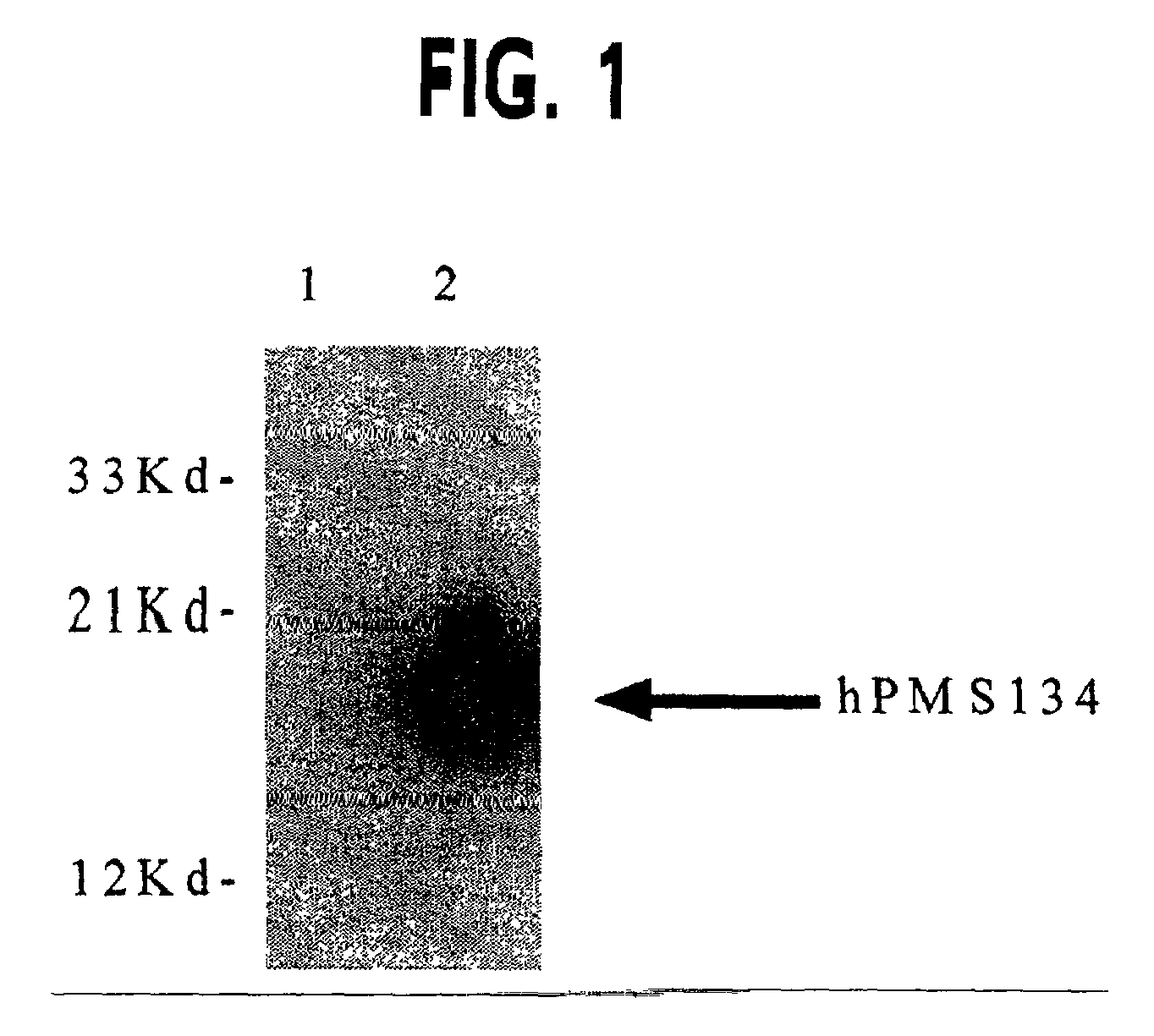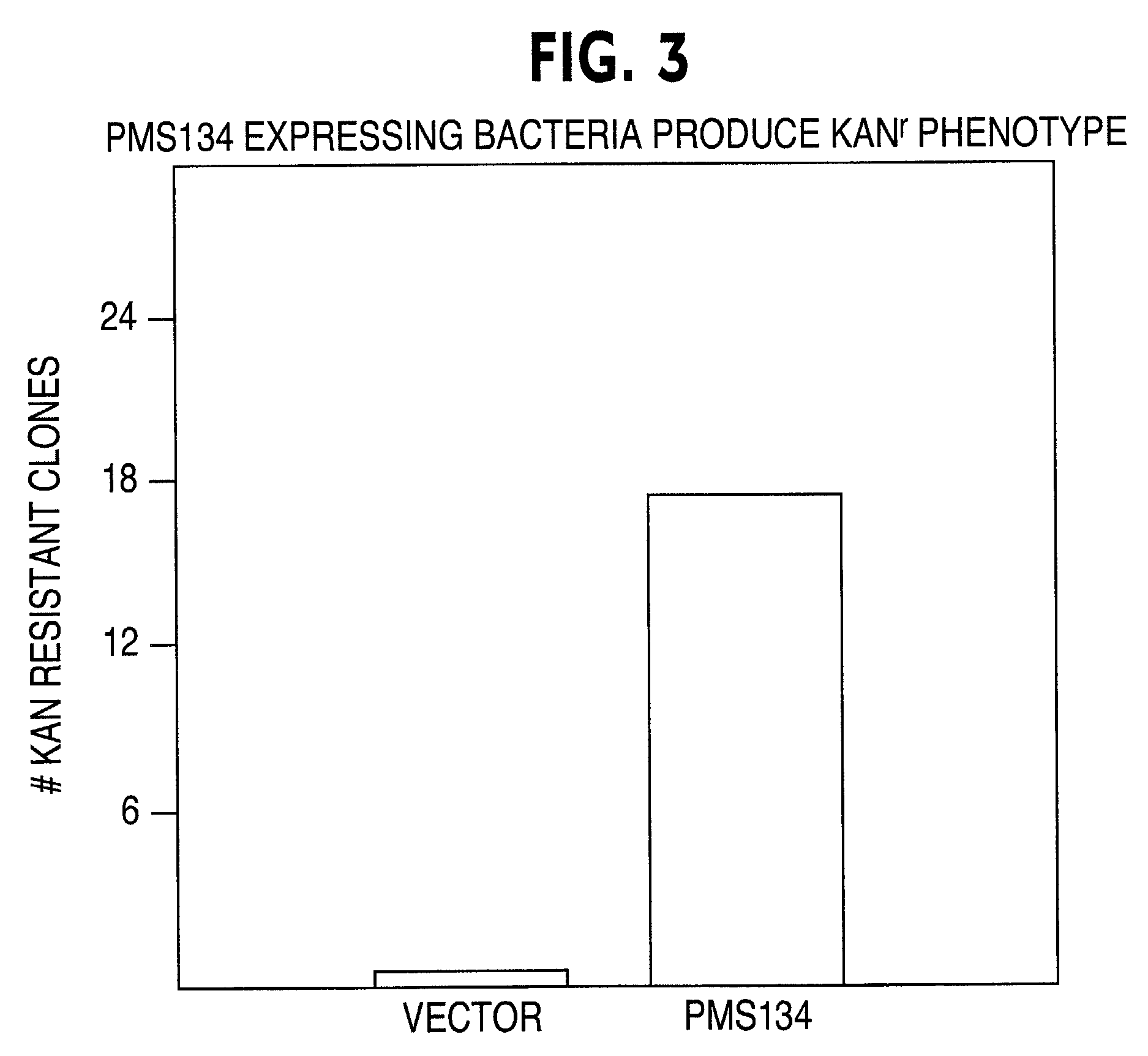Methods for generating hypermutable microbes
- Summary
- Abstract
- Description
- Claims
- Application Information
AI Technical Summary
Benefits of technology
Problems solved by technology
Method used
Image
Examples
example 1
Generation of Inducible MMR Dominant Negative Allele Vectors
[0045]Bacterial expression constructs were prepared to determine if the human PMS2 related gene (hPMSR3) (19) and the human PMS134 gene (32) are capable of inactivating the bacterial MMR activity and thereby increase the overall frequency of genomic hypermutation, a consequence of which is the generation of variant sib cells with novel output traits following host selection. Moreover, the use of regulatable expression vectors will allow for suppression of dominant negative MMR alleles and restoration of the MMR pathway and genetic stability in hosts cells (43). For these studies, a plasmid encoding the hPMS134 cDNA was altered by polymerase chain reaction (PCR). The 5′ oligonucleotide has the following structure: 5′-ACG CAT ATG GAG CGA GCT GAG AGC TCG AGT-3′ (SEQ ID NO: 1) that includes the NdeI restriction site CAT ATG. The 3′-oligonucleotide has the following structure: 5′-GAA TTC TTA TCA CGT AGA ATC GAG ACC GAG GAG AGG G...
example 2
Generation of Hypermutable Bacteria with Inducible Dominant Negative Alleles of Mismatch Repair Genes
[0052]Bacterial clones expressing the PMS134 or the empty vector were grown in liquid culture for 24 hr at 37° C. in the presence of 10 μg / ml chloramphenicol and 50 μg / ml ampicillin plus 50 μM IPTG. The next day, cultures were diluted 1:10 in medium containing 50 μM IPTG plus ampicillin / chloramphenicol (AC) or ampicillin / chloramphenicol plus 25 μg / ml kanamycin (ACK) and cultures were grown for 18 hr at 37° C. The following day, a 0.1 μl aliquot (2 μl diluted in 1000 μl of LB medium and used 50 μl for plating) of cells grown in AC medium were plated on LB-agar plates containing 40 μg / ml of 5-bromo-4-chloro-3-indolyl-B-D-galactoside (X-gal) plus 100 μg / ml ampicillin (AMP), while a 1 μl aliquot (1 μl diluted in 100 μl of LB medium and used 100 μl for plating) of cells grown in ACK medium were plated on LB-agar plates containing X-gal and 50 μg / ml kanamycin (KAN). Plates were incubated f...
example 3
Dominant Negative MMR Genes Can Produce New Genetic Variants and Commercially Viable Output Traits in Prokaryotic Organisms
[0058]The data presented in EXAMPLE 2 show the ability to generate genetic alterations and new phenotypes in bacterial strains expressing dominant negative MMR genes. In this EXAMPLE we teach the utility of this method to create prokaryotic strains with commercially relevant output traits.
Generation of Heat-resistant Producer Strains
[0059]One example of commercial utility is the generation of heat-resistant recombinant protein producer strains. In the scalable process of recombinant manufacturing, large-scale fermentation of prokaryotes results in the generation of heat, which leads to suboptimal growth conditions for the producer strain and thus resulting in lower recombinant protein yields. In order to circumvent this problem, we employed the use of DH10B bacteria containing the inducible TACLACPMS134 gene. Briefly, cells were grown in 5 ml LB shake flasks con...
PUM
 Login to View More
Login to View More Abstract
Description
Claims
Application Information
 Login to View More
Login to View More - R&D
- Intellectual Property
- Life Sciences
- Materials
- Tech Scout
- Unparalleled Data Quality
- Higher Quality Content
- 60% Fewer Hallucinations
Browse by: Latest US Patents, China's latest patents, Technical Efficacy Thesaurus, Application Domain, Technology Topic, Popular Technical Reports.
© 2025 PatSnap. All rights reserved.Legal|Privacy policy|Modern Slavery Act Transparency Statement|Sitemap|About US| Contact US: help@patsnap.com



